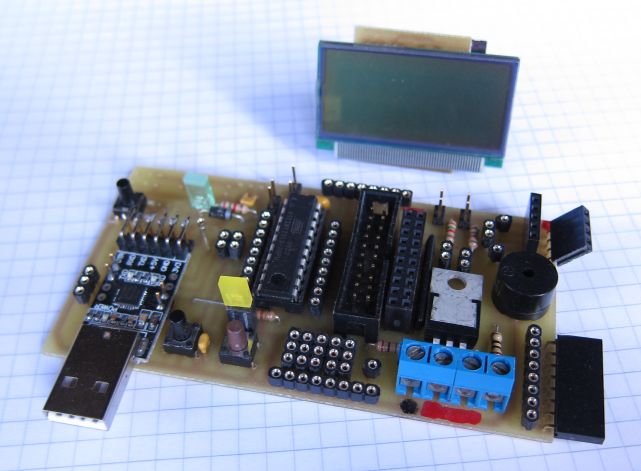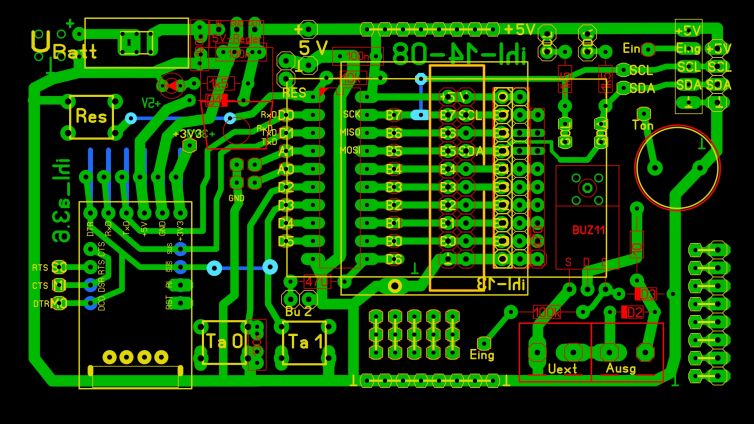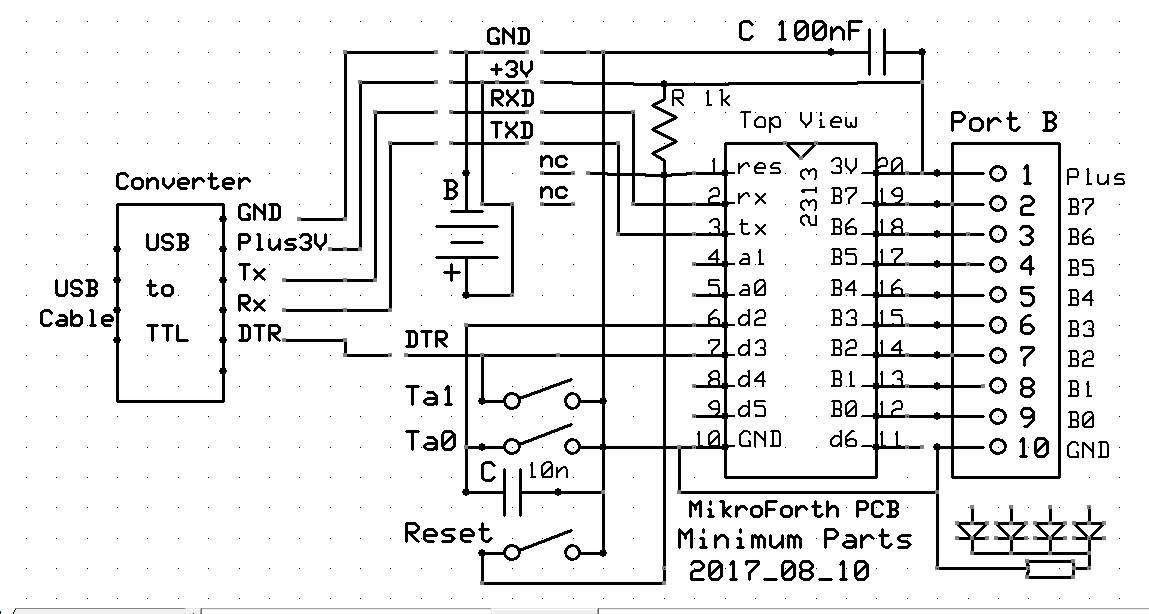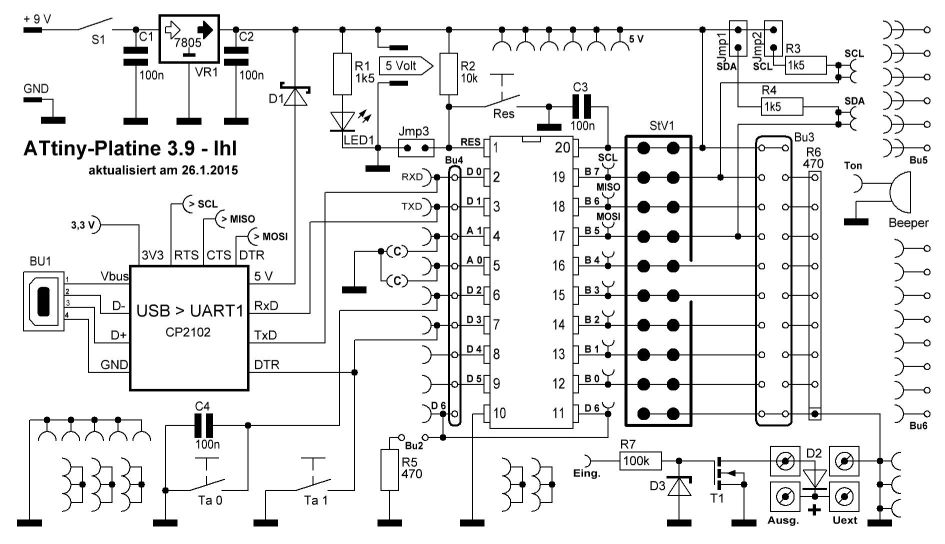Table of Contents
IDE using MikroForth for the ATMEL AVR Attiny 2313 in 20 Pin DIL
UPDATE: For some English documentation see further down …
This ATTINY Project1) has been developed by E. Eube, G. Heinrichs and U. Ihlefeldt
On his website G. Heinrichs documents the project in detail. He describes the concept, the development and the technical details. Downloads of the programs are available. FORTH and the assembler are described. There is also a forum.
This Attiny project has been used in March 2017 for the 5th microcontroller training event for teachers in Essen, Leibniz-Gymnasium.
Picture of the used PCB issue Attiny 3.0
ATTINY-Board 3.0
Main Features
- AVR Attiny2313 microcontroller (not soldered but plugged into a socket)
- USB-UART converter is integrated on circuit board;
- Bootloader ensures high speed when using the USB interface
- (almost) all connections of the AVR can be reached via contact sockets with patch cables
- In parallel to the 8 bits of a complete port (port B) 8 sockets with resistor array. As a result, the states of the port can be displayed via LEDs
- Two Interrupt Inputs directly connected to buttons, one of them debounced via a capacitor
- A piezo speaker
- A power amplifier for connecting a light bulb, electric motor …
- Serial communication and fast programming via USB
- I2C preparation via pull-up resistors (switchable by jumper)
- SPI programming of the 2313 chip via USB
- Some additional contact fields for more complex circuits
- Power supply and data transmission via standard USB extension cable;
- Power supply via 9V battery, and voltage regulator optional
- Female header for connecting a small, inexpensive LCD (LCD included as part of the kit)
- Female header for connecting additional devices, freely patchable!
- Reset button for restarting a program or activating an upload process
Circuit diagram of the board 3.0
Notes regarding the board 3.0
- The complete kit of parts includes the board, a USB connection cable, 10 LEDs, a photodiode, 2 jumpers, little jacks, an LCD (2 x 8 characters) and the necessary software (uploader program, etc.).
- The LCD uses port B; while PortB.5 and PortB.7 remain free to operate the I2C bus.
- You can easily connect other devices via the socket strip. For this purpose, the female connector is connected via patch cables to the pins of the Attiny2313. In this way a flexible assignment of the female connector pins to the Attiny pins is possible.
- On the board is a power MOSFET that can be powered from the board or via an external power source. It can also turn external devices on and off via an output of the microcontroller if they require larger currents (e.g., light bulbs or electric motors).
- The board is as well prepared for stand-alone operation without the USB cable: All you need to do is to solder a clip connection for 9V batteries, a switch, two capacitors and a 5V regulator on the board.
If you are interested in the purchase of one or more boards (as a kit or ready, from about 20 Euro), please contact Mr. Eube directly (eeube@ish.de)
Documentation
Georg’s documentation was put together for download by Jürgen Pintaske and filed here with Georg's approval in this wiki.
PDF manual for MikroForth V9 and Atiny 3.0
The bootloader for the Attiny board
Parts for download:
Micro Forth vocabulary
MikroForth words (German version)
User Manual (translation into English started)




